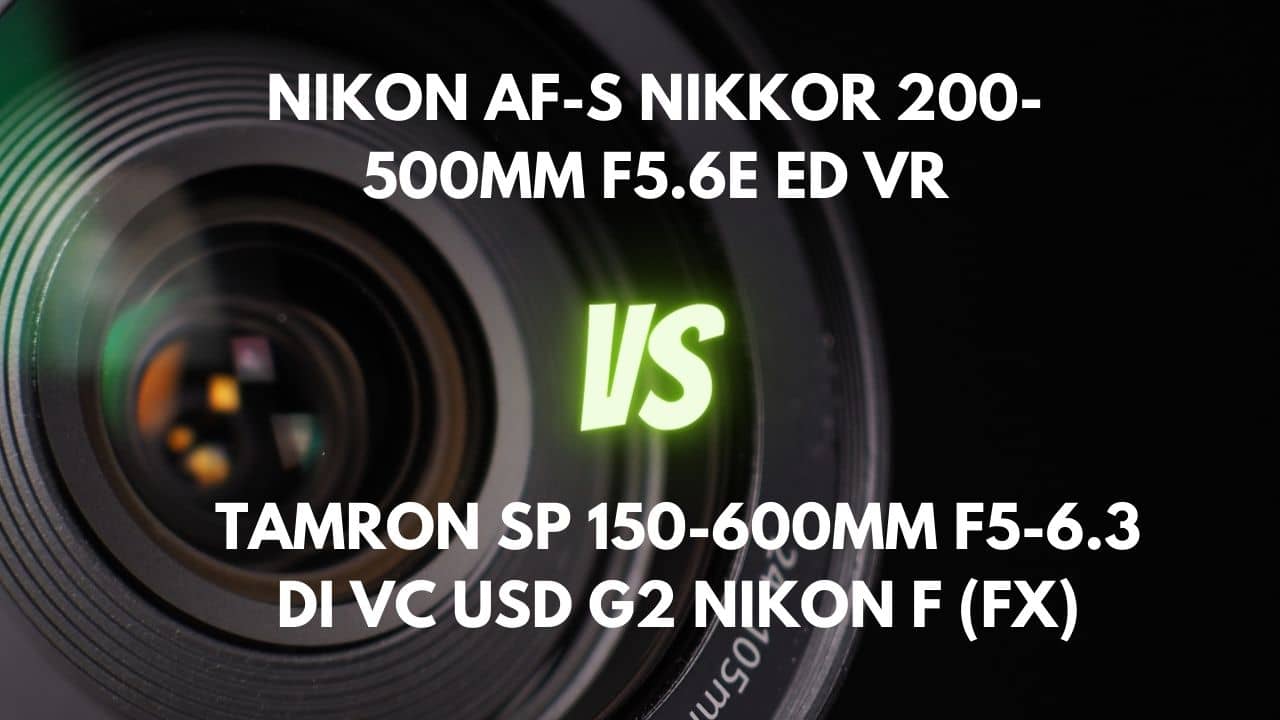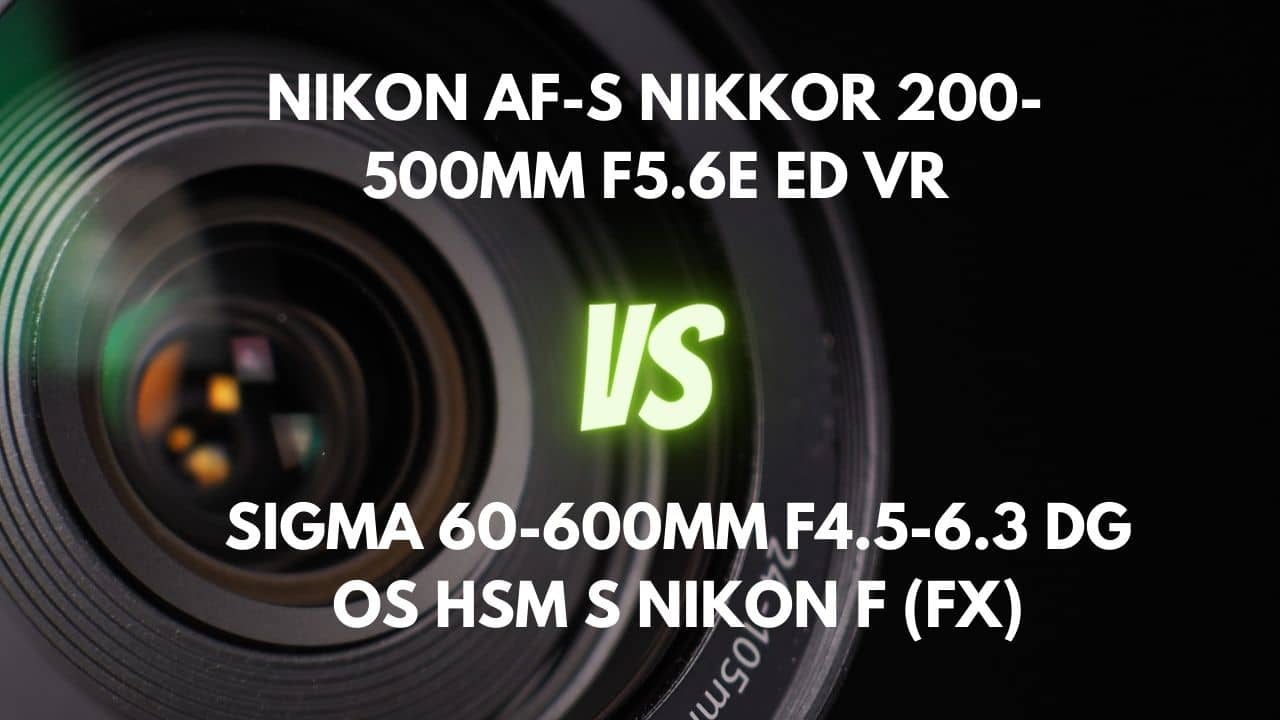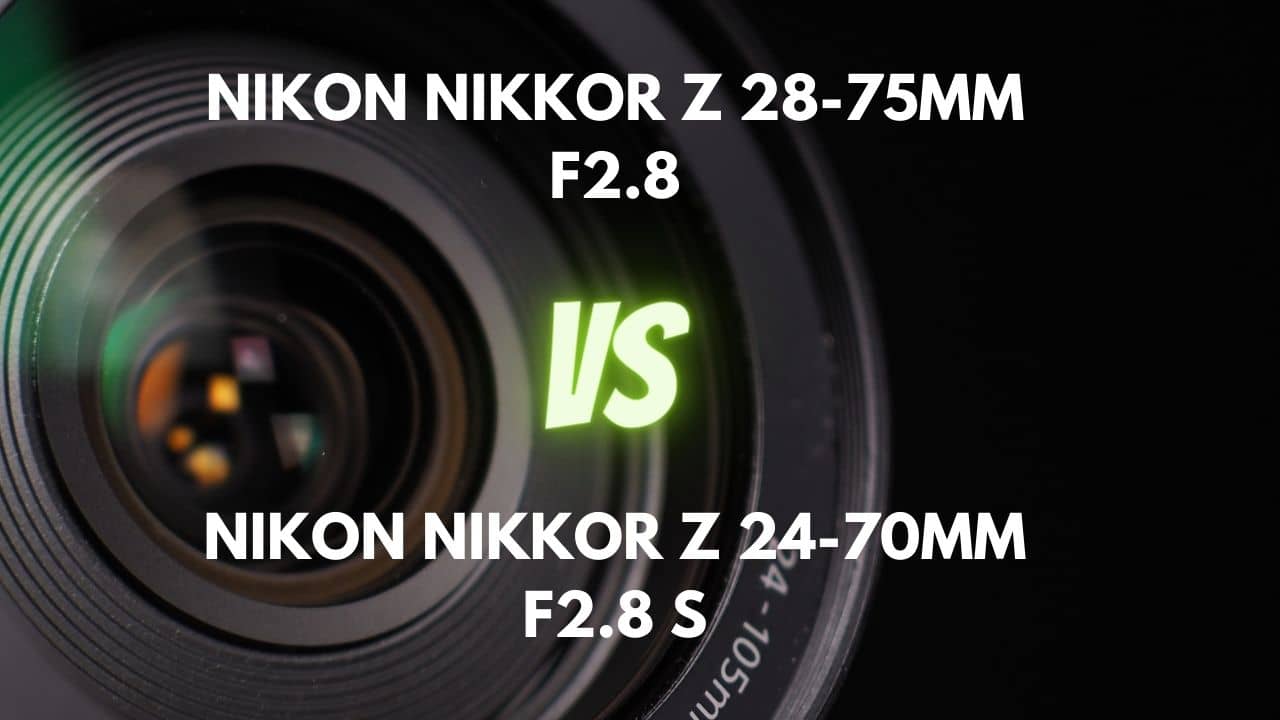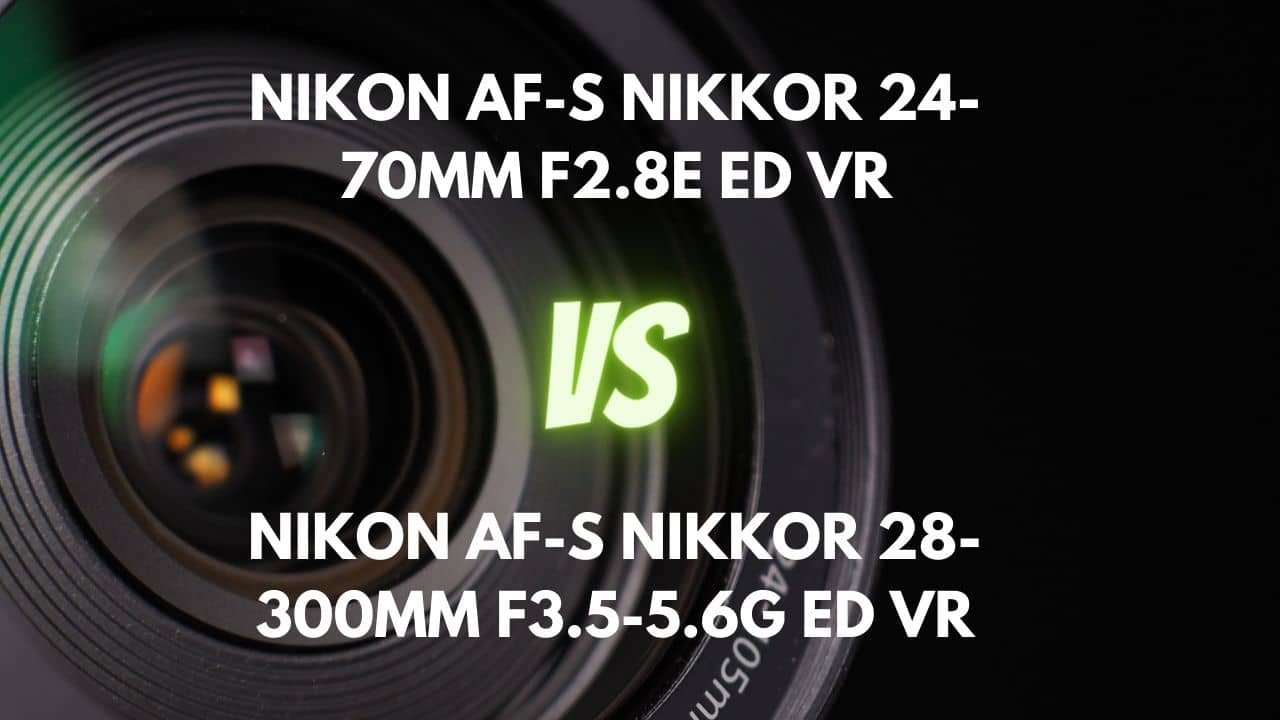Are you in search of the perfect lens to elevate your photography game? Look no further, as we dive deep into a comprehensive comparison of two popular and versatile lenses: Nikon DX 18-105mm f/3.5-5.6 and the Nikon DX 18-135mm f/3.5-5.6.
These lenses have gained traction among photography enthusiasts and professionals alike for their excellent performance and adaptability in various shooting scenarios, from portrait and landscape photography to street and travel photography.
In this captivating article, we will explore the pros and cons of each lens, taking into account factors such as image quality, optical stabilization, distortion, and more. By understanding the nuances of these two lenses, you’ll be better equipped to make an informed decision that caters to your unique photography needs.
Whether you’re a seasoned professional or an aspiring photographer, our in-depth analysis will not only guide you in selecting the best lens for your kit but also empower you with the knowledge to capture stunning images in diverse situations.
So, buckle up and get ready to unlock the full potential of your photography skills as we embark on this enlightening journey!
Overview
| Nikon AF-S DX NIKKOR 18-105mm F3.5-5.6G ED VR | Nikon AF-S DX NIKKOR 18-135mm F3.5-5.6G IF-ED | |
|---|---|---|
| Max Aperture | F3.5-5.6 | F3.5-5.6 |
| Aperture Type | Variable | Variable |
| Focal Range (mm) | 18-105 | 18-135 |
| Max Format | APS-C / DX | APS-C / DX |
| Zoom Ratio (X) | 5.8 | 7.5 |
The Nikon DX 18-105mm f/3.5-5.6 and Nikon DX 18-135mm f/3.5-5.6 both have a variable maximum aperture of f/3.5-5.6, which means that as you zoom in, the maximum aperture decreases, impacting low light performance and depth of field control. Both lenses are designed for APS-C / DX format cameras and offer different zoom ratios, with the 18-105mm having a 5.8x zoom and the 18-135mm offering a 7.5x zoom.
The 18-105mm lens has a more limited focal range compared to the 18-135mm lens, which might impact its versatility for certain types of photography. However, its smaller zoom ratio could lead to better image quality and reduced distortion at the expense of a shorter reach.
On the other hand, the 18-135mm lens has a broader focal range and a higher zoom ratio, providing more flexibility in various shooting scenarios. This increased versatility, however, may come at the cost of some compromises in image quality, especially at the longer end of the focal range.
Design and Ease of Use
| Nikon AF-S DX NIKKOR 18-105mm F3.5-5.6G ED VR | Nikon AF-S DX NIKKOR 18-135mm F3.5-5.6G IF-ED | |
|---|---|---|
| Diameter x Length (mm) | ⌀76×89mm | ⌀73.5×86.5mm |
| Weight (gr) | 420 | 385 |
| Filter Thread (mm) | 67 | 67 |
| Weather Sealing | No | No |
| Zoom Method | Rotary (extending) | Rotary (extending) |
| Distance Scale | No | No |
| DoF Scale | No | No |
| Hood Supplied | Yes | Yes |
| Hood Code | HB-32 | HB-32 |
Comparing the Nikon DX 18-105mm f/3.5-5.6 and Nikon DX 18-135mm f/3.5-5.6, we can see some key differences in their dimensions and weight.
The 18-105mm lens has a diameter of 76mm and a length of 89mm, while the 18-135mm lens is slightly more compact, with a diameter of 73.5mm and a length of 86.5mm. In terms of weight, the 18-105mm lens is heavier at 420 grams, whereas the 18-135mm lens weighs 385 grams. Both lenses feature a rotary (extending) zoom method.
The 18-135mm lens holds a slight advantage in terms of portability, balance, discreetness, storage, and lens swapping due to its more compact size and lighter weight. However, both lenses use the extending rotary zoom method, which means they share the same pros and cons in terms of complexity, weather sealing, and balance changes while zooming.
In conclusion, the 18-135mm lens appears to be superior due to its smaller size and lighter weight, which offer greater portability and ease of handling without compromising on performance. However, your specific needs and preferences should be taken into account when choosing the ideal lens for your photography requirements.
Lens Mount and Barrel
The Nikon DX 18-105mm f/3.5-5.6 features a high-quality industrial polycarbonate lens barrel with a textured finish that matches Nikon camera bodies. This plastic construction offers the advantage of being lightweight and more affordable. However, its hard plastic lens mount, which lacks a rubber gasket, indicates that the lens is not weather-sealed. The lens extends almost 2 extra inches at the 105mm end due to its non-internal zoom action.
On the other hand, the Nikon DX 18-135mm f/3.5-5.6 has a plastic lens barrel with a build quality that leans towards the cheaper side. It also has a plastic lens mount that contributes to its lightweight nature and is less likely to wear out the camera mount. However, the absence of a rubber gasket around the mount suggests that this lens is not weather-sealed either. The lens changes its physical size when zooming, with the front of the lens popping out as much as 9″ (23cm) from the subject at 135mm.
In conclusion, both lenses have their pros and cons. The 18-105mm lens boasts a higher-quality polycarbonate lens barrel, while the 18-135mm lens is more lightweight and less likely to wear out the camera mount. Neither lens is weather-sealed.
Weather Sealing
Comparing the weather sealing of the Nikon DX 18-105mm f/3.5-5.6 and Nikon DX 18-135mm f/3.5-5.6, it’s clear that neither lens offers any substantial protection against environmental elements.
The 18-105mm lens lacks internal seals at the rings, switches, and front of the barrel, as well as a gasket at the lens mount. Furthermore, it doesn’t have a fluorine coating on the front element. Similarly, the 18-135mm lens is not weather-sealed, with no gasket at the lens mount, internal seals at the rings and switches, or fluorine coating on the front element.
Weather sealing is a valuable feature for photographers who frequently shoot in challenging environments or unpredictable conditions, as it provides protection against dust, moisture, and light water splashes. While weather sealing is not essential for portrait lenses, it can offer additional durability, performance, and peace of mind for those who often shoot outdoor portraits or in variable weather conditions.
In conclusion, neither the 18-105mm nor the 18-135mm lens offers superior weather sealing, as both lack essential protective features. If weather sealing is a crucial factor in your decision-making process, you may want to consider other lenses that provide more robust protection against environmental elements. However, if weather sealing is not a top priority and you primarily shoot portraits indoors or in controlled settings, both lenses could still be suitable options for your photography needs.
Rings
The Nikon DX 18-105mm f/3.5-5.6 features 2 rings: a wide, ribbed rubber-textured zoom ring positioned towards the front of the barrel and a thinner focus ring behind it with a ridged rubber coating. The zoom ring offers approximately 80 degrees of travel with a pleasant resistance, while the focus ring provides around 100 degrees of travel, which may be less than ideal for precise manual focus control.
Both rings move smoothly and positively, but there are no ergonomic bevels, windowed distance scale, or depth-of-field indicator on the lens. The 1.5-inch wide zoom ring is easy to grip, but the lens lacks a zoom lock.
On the other hand, the Nikon DX 18-135mm f/3.5-5.6 features both a focus and zoom ring located towards the front of the lens. The wide, rubberized zoom ring turns smoothly, but may experience zoom creep at the telephoto end. The focus ring can be easily manipulated with the tip of a finger and provides a nice tactile experience. Like the 18-105mm, this lens lacks a windowed distance scale and depth-of-field indicator.
The lens offers good manual focusing distance and focuses to 1.5′ (0.45m) at every setting. However, the telephoto end of the zoom range is cramped, making precise composition more challenging. There is no extension lock switch on the zoom ring.
In conclusion, both lenses have their pros and cons when it comes to ring design. The 18-105mm lens offers a wide zoom ring with a pleasant resistance and smooth movement, while the 18-135mm lens provides a smoother focus ring and better manual focusing distance.
Neither lens offers ergonomic bevels, windowed distance scale, depth-of-field indicator, or a zoom lock. If precise manual focus control and a wider zoom ring are your priorities, the 18-105mm lens might be a better choice. However, if you value a smoother focus ring with better manual focusing distance and don’t mind the cramped telephoto end, the 18-135mm lens may be more suitable for you.
Switches/Buttons
The Nikon DX 18-105mm f/3.5-5.6 features 2 control switches on its left side: one for toggling between autofocus (A) and manual focus (M), and another for enabling or disabling the vibration reduction feature (ON or OFF). Apart from these two switches, there are no other buttons or controls on this lens.
In contrast, the Nikon DX 18-135mm f/3.5-5.6 has a single mode switch that indicates “A” and “M” instead of “M/A” and “M.” In the “A” mode, users can quickly engage manual focus override by simply grabbing the focus ring, which is easy to manipulate with just the tip of a finger. Like the 18-105mm lens, the 18-135mm lens does not offer any additional switches or buttons.
In conclusion, both lenses have relatively minimal switches/buttons, with the 18-105mm lens offering separate switches for autofocus/manual focus and vibration reduction, while the 18-135mm lens provides a single mode switch that allows for instant manual focus override.
If you prefer separate controls for autofocus and vibration reduction, the 18-105mm lens might be a better choice. However, if you value the convenience of instant manual focus override with a single switch, the 18-135mm lens could be a more suitable option for you.
Filter Thread
Diving into the comparison between the Nikon DX 18-105mm f/3.5-5.6 and Nikon DX 18-135mm f/3.5-5.6, both have a filter thread size of 67mm. The 67mm size is a common filter size, which means it is compatible with a variety of filters at a reasonable price.
Lens Hood
Both the Nikon DX 18-105mm f/3.5-5.6 and Nikon DX 18-135mm f/3.5-5.6 come with the same petal-shaped lens hood made of plastic, which attaches via a bayonet mount.
This lens hood effectively shields the front element from sun coming in at oblique angles, reducing flare and maintaining image contrast. Its ergonomic bevel ensures a smooth rotation and decent grip during installation and removal. Though not flocked on the inside, the lens hood still does a respectable job in terms of light reflection prevention.
Measuring an additional 1.25 inches in length when attached, the lens hood can be reversed for easy storage. Its simple design complements the lens barrel and offers some degree of protection against impacts, dust, and moisture. However, the non-ribbed design may not provide the same level of durability as a ribbed lens hood.
In conclusion, the lens hood included with both the 18-105mm and 18-135mm lenses performs well in terms of flare prevention and ease of use. Although it may lack the enhanced durability and light reflection prevention of a ribbed lens hood, it still provides decent protection and contributes to the overall performance of each lens. Since the same lens hood is used for both lenses, there is no superior option in this aspect.
Focusing and Optical Stabilization
| Nikon AF-S DX NIKKOR 18-105mm F3.5-5.6G ED VR | Nikon AF-S DX NIKKOR 18-135mm F3.5-5.6G IF-ED | |
|---|---|---|
| Autofocus | Yes | Yes |
| AF Motor | Silent Wave Motor | Silent Wave Motor |
| Rotating Front Element | Does not rotate on focusing | Does not rotate on focusing |
| Min Focus Distance | 0.45m | 0.45m |
| Full-Time Manual Focus | Yes | Yes |
| Focus Method | Internal | Internal |
Focusing Performance
When it comes to focusing performance, the Nikon DX 18-105mm f/3.5-5.6 is equipped with a Silent Wave Motor drive that provides quick and virtually silent autofocus operation. Although not as fast as higher-grade AF-S lenses, it works accurately and reasonably quickly.
The manual focus action is easy to operate, and autofocus can be overridden at any time by simply turning the focus ring. Featuring an internally focusing design, the lens maintains a constant length regardless of focus and zoom settings, exhibits no zoom creeping. However, autofocus performance may slow down in low-light situations, particularly at the longer end of the zoom range.
The Nikon DX 18-135mm f/3.5-5.6 has an autofocus motor that is accurate and reasonably fast while making a quiet wishing and squeaking sound. The autofocus acquisition speed is decent but may struggle in low light or low-contrast situations.
Like the 18-105mm lens, the 18-135mm lens also allows for instant manual focus override by grabbing the focus ring and has an internally focusing design. The manual focus action is smooth, and the front element does not rotate during focusing. However, the lens does have focus breathing, causing the image to zoom in and out slightly when changing focus.
In conclusion, both lenses provide good autofocus performance, with the 18-105mm lens being virtually silent and the 18-135mm lens featuring a smooth manual focus action.
Optical Stabilization
The Nikon DX 18-105mm f/3.5-5.6 features Nikon’s Vibration Reduction (VR) image stabilization system, providing up to 3 stops of stabilization for sharper shots at slower shutter speeds. With only one stabilization mode, it lacks the VR Active mode found in some higher-grade VR lenses. However, the VR system is effective, quiet, and can be toggled via a switch on the lens barrel. At 50mm, the lens allows for handheld shots at shutter speeds as slow as 1/8 second, while at 70mm, sharp images can be achieved at 1/13 second.
On the other hand, the Nikon DX 18-135mm f/3.5-5.6 does not have optical stabilization or VR, which may lead to blurry shots at longer focal lengths, particularly in low light situations.
In conclusion, the 18-105mm lens has a clear advantage in optical stabilization, thanks to its VR system that enables sharper handheld shots at slower shutter speeds. The absence of optical stabilization in the 18-135mm lens makes it more challenging to capture sharp images in certain situations, particularly at longer focal lengths and in low light conditions. Therefore, the 18-105mm lens with its VR system offers superior optical stabilization performance compared to the 18-135mm lens.
Image Quality
| Nikon AF-S DX NIKKOR 18-105mm F3.5-5.6G ED VR | Nikon AF-S DX NIKKOR 18-135mm F3.5-5.6G IF-ED | |
|---|---|---|
| Special Elements | ED glass element and aspherical lens element | 2x ED lens elements 2x aspherical elements |
| Diaphragm Blades | 7 | 7 |
| Circular Aperture | Yes | Yes |
Aberration
The Nikon DX 18-105mm f/3.5-5.6 displays some chromatic aberration, particularly at its widest focal length of 18mm. However, the level of chromatic aberration is generally acceptable and should not be an issue unless producing very large prints.
The aberration is well-controlled across all focal lengths, with the choice of aperture having minimal impact. The borders might exhibit chromatic aberration and light fall-off when used wide open, but they are relatively sharp within the f/5.6-f/11 range.
In contrast, the Nikon DX 18-135mm f/3.5-5.6 exhibits chromatic aberration as colored fringes towards the image sides, most commonly seen as red/cyan fringing at the extreme ends of the zoom range. Although noticeable, this aberration can be corrected through in-camera processing or post-processing software. The lens may also suffer from residual spherical aberrations at the wide end of the zoom range, resulting in focus shift when stopping down.
In conclusion, the 18-105mm lens offers a slightly better performance in terms of aberration control, with its generally well-managed chromatic aberration across all focal lengths. While the 18-135mm lens does exhibit some chromatic and spherical aberrations, these issues can be addressed through post-processing software.
Sharpness
The Nikon DX 18-105mm f/3.5-5.6 demonstrates consistent sharpness performance throughout the zoom range, offering excellent performance at all focal lengths. Wide open apertures can result in some chromatic aberration and light fall-off, but sharpness improves rapidly upon stopping down, with peak performance at f/11.
Even at f/16, the edges remain sharp, while f/22 is sharper than the wide open aperture. Corner softness may be noticeable in some situations but can be improved by stopping down the lens. The level of sharpness should be largely acceptable for producing prints, except when the lens is stopped down beyond f/16 at 105mm.
On the other hand, the Nikon DX 18-135mm f/3.5-5.6 displays varying sharpness depending on focal length and aperture. The middle of the image is generally sharp, with corners being slightly soft at wider angles. Stopping down to f/8 or f/11 significantly improves corner sharpness.
The lens performs well when wide open, and stopping down enhances overall sharpness. The sharpest aperture varies with the focal length, with f/8 or f/11 being ideal starting points. The lens’s sharpness is generally impressive, given its low cost and wide zoom range.
In conclusion, both lenses offer good sharpness performance. The 18-105mm lens maintains consistent sharpness throughout its zoom range, making it a reliable choice for various photography styles. The 18-135mm lens also provides excellent sharpness, especially considering its price and versatility. While the 18-105mm may have a slight edge in terms of overall consistency, the 18-135mm lens remains a strong contender for those seeking sharpness on a budget and with a broader zoom range.
Bokeh Quality
The Nikon DX 18-105mm f/3.5-5.6 is designed with an iris diaphragm containing 7 rounded blades, which contributes to a pleasing rendering of out-of-focus areas and results in soft, attractive bokeh. The bokeh changes shape with light distribution in the center, creating beautiful bokeh around the subject, while in the corners, the bokeh takes on a cat’s eye form. Overall, the efforts to render appealing out-of-focus areas have been largely successful.
In contrast, the Nikon DX 18-135mm f/3.5-5.6 produces reasonably pleasing bokeh quality, particularly in the mid to long range. While it may not be as smooth and beautiful as some higher-end lenses, it still manages to create a pleasant background blur that effectively separates subjects from the background. This makes it a suitable option for portrait, nature, and animal photography, where bokeh plays a vital role in enhancing the visual appeal of the images.
In conclusion, both lenses offer decent bokeh quality, but the 18-105mm lens have a slight advantage, which creates a softer and more attractive bokeh. The 18-135mm lens still provides a reasonably pleasant bokeh, making it a viable option for those who value bokeh quality in various photographic scenarios. However, if bokeh quality is a priority, the 18-105mm lens may be the superior choice.
Flare/Ghosting
The Nikon DX 18-105mm f/3.5-5.6 demonstrates a commendable resistance to flare and ghosting, even when light sources are included in the frame. However, it is important to note that this lens is quite sensitive to backlight, leading to ghosting and flare in certain situations. The lens comes with a petal-shaped lens hood, which effectively shields the front element from unwanted light outside the image frame, helping to minimize these issues.
On the other hand, the Nikon DX 18-135mm f/3.5-5.6 exhibits well-controlled flare and ghosting, largely due to the included lens hood that minimizes these problems. While you may notice more ghosting when the sun directly hits the lens compared to some other modern lenses, the lens hood effectively manages these occurrences. It is crucial to use the lens hood in challenging lighting situations to maintain optimal image quality and reduce flare and ghosting.
In conclusion, both lenses perform relatively well in terms of flare and ghosting control. However, the 18-105mm lens may require more attention to backlight situations to prevent unwanted flare and ghosting. The 18-135mm lens appears to handle these issues more effectively when the lens hood is used.
Vignetting
The Nikon DX 18-105mm f/3.5-5.6 exhibits some corner shading, particularly at wider apertures and focal lengths. However, this vignetting is fairly subtle and can be easily corrected by using smaller apertures. At 18mm and f/3.5, the corners are about 1.85 stops darker than the image center, while at 105mm and f/5.6, the corners are about 2.47 stops darker. Stopping down to f/11 results in visually uniform illumination across the image. Some users may not find the vignetting to be a significant issue, especially when using a camera body with built-in vignetting control.
On the other hand, the Nikon DX 18-135mm f/3.5-5.6 displays vignetting at both ends of the focal range. This effect can be noticeable at wider apertures but can be easily edited in post-processing or left as is, as it may not bother most users. Stopping down can also help reduce vignetting to some extent. The level of vignetting varies depending on the focal length used and whether in-camera corrections are turned off.
In conclusion, both lenses display some level of vignetting, with the 18-105mm lens having a slightly more pronounced effect at its widest apertures and focal lengths. However, the 18-135mm lens manages vignetting more effectively when stopped down.
Distortion
The Nikon DX 18-105mm f/3.5-5.6 exhibits some form of distortion at almost all focal lengths. At its widest point of 18mm, noticeable barrel distortion occurs, which can be corrected using post-processing software. However, from 24mm onwards, the lens displays a complex distortion profile, with the edges exhibiting pincushion-style distortion while the center displays barrel distortion, creating a “moustache” effect.
Although the distortion is less pronounced at 35-50mm focal lengths, no setting on this lens produces a distortion-free image. The non-linear and complex nature of the 18-105mm’s distortion makes it challenging to correct in-camera or during post-processing.
On the other hand, the Nikon DX 18-135mm f/3.5-5.6 demonstrates noticeable distortion throughout its focal range. At 18mm, it displays significant barrel distortion, which is common in zoom lenses. As you zoom in, the distortion transitions to pincushion distortion, particularly from 28mm to 135mm. This can pose problems when photographing architecture or landscapes.
Nevertheless, many users report that the distortion is manageable, and newer cameras with built-in distortion correction features or post-processing software can help mitigate its impact.
In conclusion, both lenses experience some level of distortion; however, the 18-105mm lens presents a more complex distortion profile, making it harder to correct. The 18-135mm lens offers more manageable distortion that can be easily addressed using in-camera correction features or post-processing software.
Final Verdict
In conclusion, both the Nikon DX 18-105mm f/3.5-5.6 and Nikon DX 18-135mm f/3.5-5.6 have their strengths and weaknesses.
The 18-105mm lens generally offers better image quality, more effective optical stabilization, and slightly better bokeh and chromatic aberration control. However, its more complex distortion profile may be challenging to correct.
On the other hand, the Nikon DX 18-135mm f/3.5-5.6 provides a broader focal range and higher zoom ratio, offering increased versatility in various shooting scenarios. It also has a more manageable distortion profile and slightly better flare and ghosting control, making it a better option for photographers shooting in challenging lighting conditions.
While the 18-105mm lens may be more suitable for photographers prioritizing image quality and optical stabilization, the 18-135mm lens is an excellent choice for those seeking a versatile, budget-friendly option with good overall performance. Ultimately, your specific needs and preferences should be taken into account when choosing the ideal lens for your photography requirements.






